I think I’m becoming bitter in my old age.
I really don’t want to be a bitter old man. I’m only 47 years old, but the bitterness is really something I can’t stay away from.
When I say bitterness, I’m talking about my palate. The older I get, the more I enjoy the bitter flavors I couldn’t stand when I was younger.
A cocktail with Campari and a big dish of sauteed broccoli rabe are two things I would run away from 20 years ago. But, for some reason, I love them now.
And lucky for me, Campari and broccoli rabe are both easy to find these days.
When I was a kid the only place you would find broccoli rabe was in the kitchen of an Italian grandmother. And my grandmother’s kitchen was one of them.
She made it as a side dish a few times a week. She would always cook it in a really simple way with olive oil, garlic, salt, and pepper. Sometimes she would add sausages and turn it into a full meal.
I didn’t appreciate the leafy greens and bitter flavor back then. I just thought it was some weird, gross vegetable that only Italian people ate.
Now, me and everyone else I can think of loves this bitter green veggie.

It’s way more common today compared to when I was younger. You will find it in the grocery store all the time as well as on the menu at most Italian restaurants. It’s included in pasta dishes, made into pesto, and served as appetizers and side dishes.
Sauteed broccoli rabe has become a staple when it comes to Italian cuisine in the United States.
Today, it’s not just part of the Italian cooking scene. It’s really evolved into an ingredient that goes way beyond the usual Italian dishes.
I’ve seen chefs at trendy American restaurants and Asian restaurants come up with very cool ways to use this leafy green vegetable. It makes a lot of sense when you think about it. Whether it’s collard greens or mustard greens, broccoli rabe has a similar flavor profile that works.
This bitter green is on the rise for a reason.
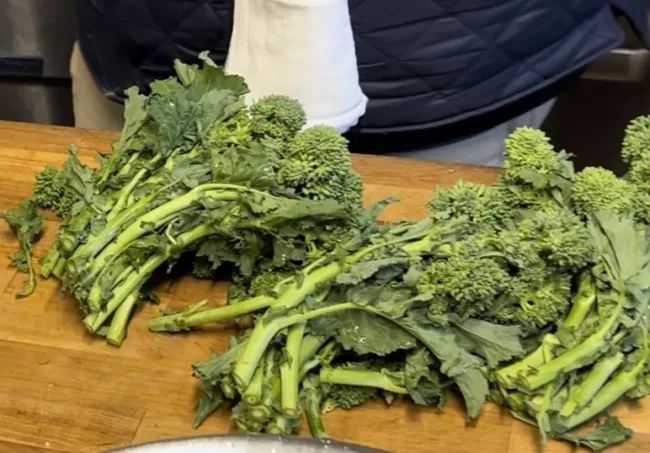
What is Broccoli Rabe?
So what the heck is broccoli rabe anyway?
It’s a leafy green vegetable with a bitter, peppery flavor that people either love or hate. It has large leaves on the outside and smaller inner leaves, both of which are edible.
It’s very common in Mediterranean cuisine. You will find it in Italy, France, Portugal and Spain. It compliments most meat, fish, and pasta dishes.
I love to serve it as a side dish with a big Sunday sauce. The bitterness really goes great with the rich, meaty tomato sauce.
These edible leaves are attached to a tough stem, which becomes tender when cooked the right way. Amongst the green leaves and stems, you will find smaller florets that are slightly similar to broccoli florets. These little leafy green florets have a slightly bitter taste.
The plant as a whole is known for its strong flavors.
Broccoli rabe is part of the cruciferous family and the mustard family. It is also related to the turnip.
This interesting brassica vegetable goes by many names. In the United States you commonly see it called broccoli rabe, broccoli raab, and rapini.
Here’s an interesting fact. According to Anthony DiRenzo, a writing professor at Ithaca College, broccoli rabe and its popularity in the United States has a connection to Boston.
In the early 1900’s, Sicilian immigrant Andrea D’Arrigo, settled in Boston and started a produce company. Eventually, he moved his operations to San Jose, California where the climate was perfect for growing the crops he grew up with in Italy. Broccoli rabe was one of them. This resulted in the Andy Boy company being the biggest producer of broccoli rabe in the United States.

Another interesting fact I discovered in my research is that not everyone can call this vegetable “broccoli rabe”. According to Foodprint.org, Andy Boy has trademarked the name “broccoli rabe” and is the only company with the rights to use it.
Other farmers and distributors are forced to call it by its other names such as broccoli raab and rapini.
In Italy you will find this vegetable called by a few different names. Examples are broccoletti in Rome, friarielli in Naples and cima di rapa in Puglia.
Broccoli rabe is grown in cool weather. You’ll find it in season in early Spring and late Fall.
Like I said, I went from a hater to a lover of broccoli rabe. While I think it’s the king of bitter greens, sometimes you have to change it up. Maybe you can’t find a beautiful bunch of broccoli rabe or you have to deal with someone like me, when I was eight years old.
The Best Broccoli Rabe Substitutes
If you need a green vegetable, here is a list of some of the best broccoli rabe substitutes.
1. Collard Greens: Collard greens are a green leafy vegetable common in the South. They can be sauteed in garlic and olive oil and served as a side dish. They have a slightly bitter and earthy taste that makes them a good substitute for broccoli rabe.
2. Turnip Greens: Turnip greens are the top part of the turnip root and are an excellent substitute. They have a flavor that is a bit peppery and are similar to the broccoli rabe flavor. The leaves of the turnip greens also look very similar to the leaves of the broccoli rabe plant.
When we made pizza with Gabriele Bonci in Rome we had turnip greens sauteed in garlic and olive oil. We topped a fresh pizza bianca with them and a white bean puree. I can still remember how good they were.
3. Mustard Greens: These peppery greens also have a leaf that is very similar to the broccoli rabe leaf. They have a similar taste and similar texture to broccoli rabe.
In fact, when I was younger my grandparents always called broccoli rabe “mustard greens”. It wasn’t until broccoli rabe started to become popular that I realized they were calling it by the wrong name!
That being said, it’s a great substitute to be used in place of broccoli rabe.

4. Dandelion Greens: These bitter greens are used in salads and can be sauteed with garlic and olive oil. They’re a weed which is pretty weird, but cool at the same time.
5. Swiss Chard: Swiss chard is a green vegetable with big green leaves and thick stalks. The stalks can be green, yellow or red. They have a milder flavor than broccoli rabe or any of the mustard family veggies. If you need a good sauteed green, this is the perfect substitute.
6. Chinese Broccoli: I love ordering Chinese broccoli when I see it on a menu. It’s usually in a Chinese restaurant and comes sauteed in a dark, rich garlic sauce. It’s also known as gai lan or Chinese kale.
Chinese broccoli has thicker stems and big leaves. It’s milder than broccoli rabe but has a great flavor.
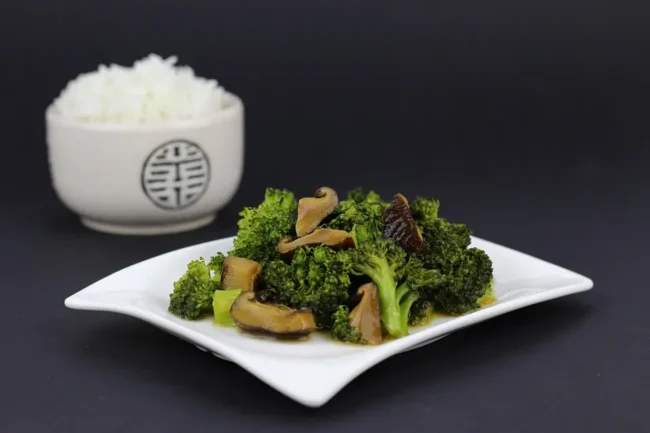
7. Bok Choy: When I see bok choy on a menu I usually get it. It’s a type of chinese cabbage that is usually steamed or stir fried in a Chinese restaurant.
I’ve used it as a side dish many times. I cook it just like I do broccoli rabe. I heat up some olive oil in a saute pan, add sliced garlic, crushed red pepper and the bok choy.
Cook it until it becomes soft and tender.
8. Broccolini: This is a hybrid vegetable that looks like regular broccoli but with long, thin stems and smaller florets.
It’s a cross between broccoli and Chinese broccoli. You might see this hybrid of broccoli marketed as baby broccoli from time to time.
9. Brussels Sprouts: These have a totally different flavor profile when compared to broccoli rabe or another green cruciferous vegetable. But, they are a great side dish.
They have gained a lot of popularity in recent years and are a staple on most restaurant menus.
You can sautee them in a pan or roast them in the oven. A little char on them creates a lot of great flavors.

10. Cavolo Nero: This type of kale is from Tuscany and also goes by the name of Tuscan kale.
Saute it with olive oil and garlic or use it in salads, soups and stews.
11. Broccoli: This vegetable is part of the cabbage family. We all know what it looks like and tastes like. It’s got a much more mild flavor than broccoli rabe. Don’t let the similar names fool you.
Broccoli and broccoli rabe are very different, but can be used interchangeably in most recipes.
12. Spinach: This leafy green vegetable goes great as a side dish with a big juicy steak. Cook it down with olive oil, garlic and grated parmesan cheese.
13. Escarole: This leafy green vegetable is a member of the chicory family. It can be sauteed just like you would broccoli rabe and used as a side dish.
You can also use it in salads and soups. Escarole and beans is a dish that you definitely want to try.
Broccoli Rabe Substitutes FAQ’s
Q: Can I use herbs as broccoli rabe substitutes in small amounts?
A: Not as a full replacement, but adding herbs like parsley or basil to milder greens like spinach can help mimic broccoli rabe’s bold, slightly bitter edge.
Q: Do broccoli rabe substitutes change the cooking time?
A: They can! Spinach cooks quickly, while kale or collard greens need a little more time. Just keep an eye on your pan so your greens stay tender, not mushy.
Q: Are there gluten-free recipes using broccoli rabe substitutes?
A: Absolutely. Most broccoli rabe substitutes are naturally gluten-free and pair beautifully with gluten-free pastas, polenta, or grilled meats.
Q: Which broccoli rabe substitutes are kid-friendly?
A: If the bitterness of broccoli rabe isn’t a hit with the kids, try baby spinach or green beans. They’re milder in flavor and usually easier to sneak into meals.
Q: Do I need to adjust cooking time when using a substitute?
A:Yep, cooking time can vary. Tender greens like spinach cook super fast, while collard greens or kale might need a little longer to soften up.
Ready to Get Creative with Your Greens?
Whether you’re out of rapini or just want something a little less bitter, these broccoli rabe substitutes give you plenty of delicious options to play with. From sautéed kale to garlicky collard greens, there’s no shortage of bold and flavorful greens to bring to your next meal.
Got a favorite swap that we didn’t mention? Drop it in the comments — we’d love to hear how you’re cooking it up! And if you’d rather skip the prep and go straight to enjoying great food, check out what we’ve got cooking at the Mortadella Head store.

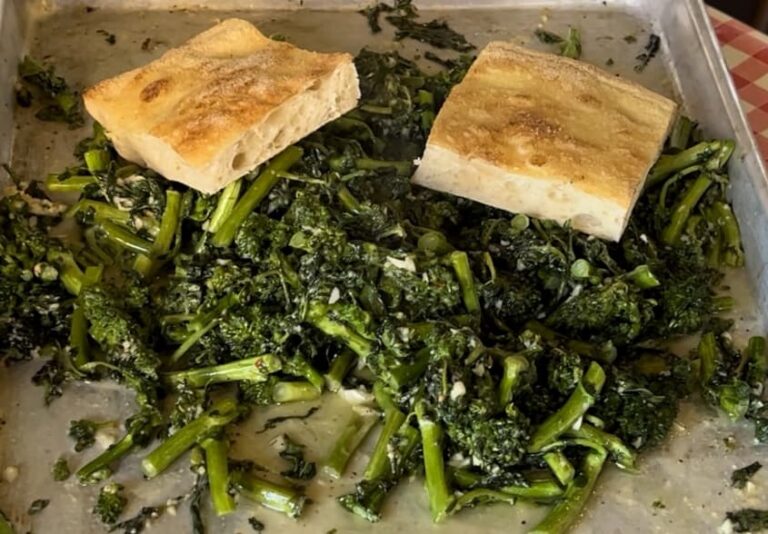



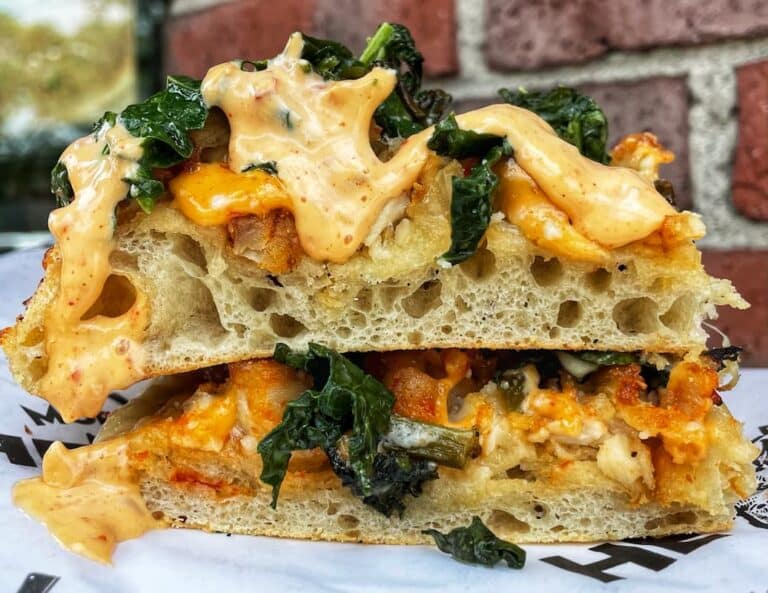
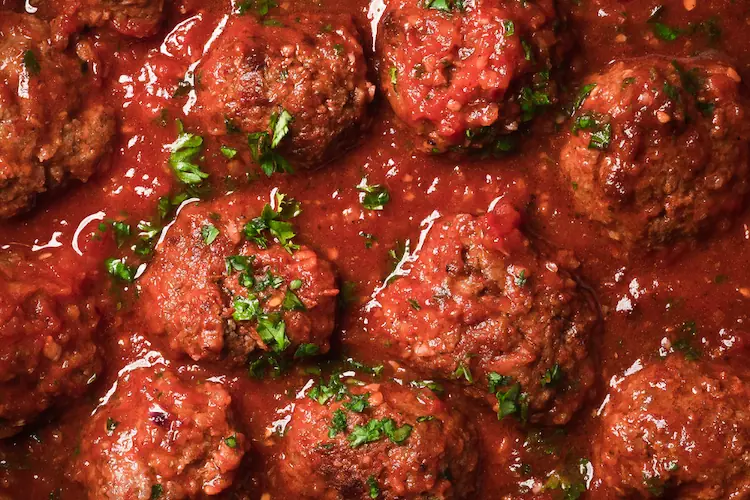


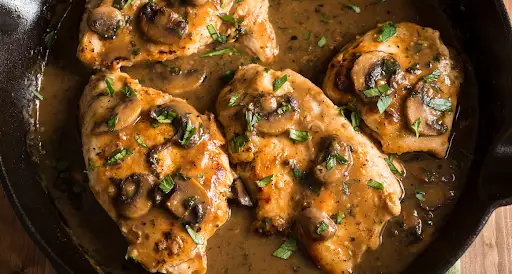
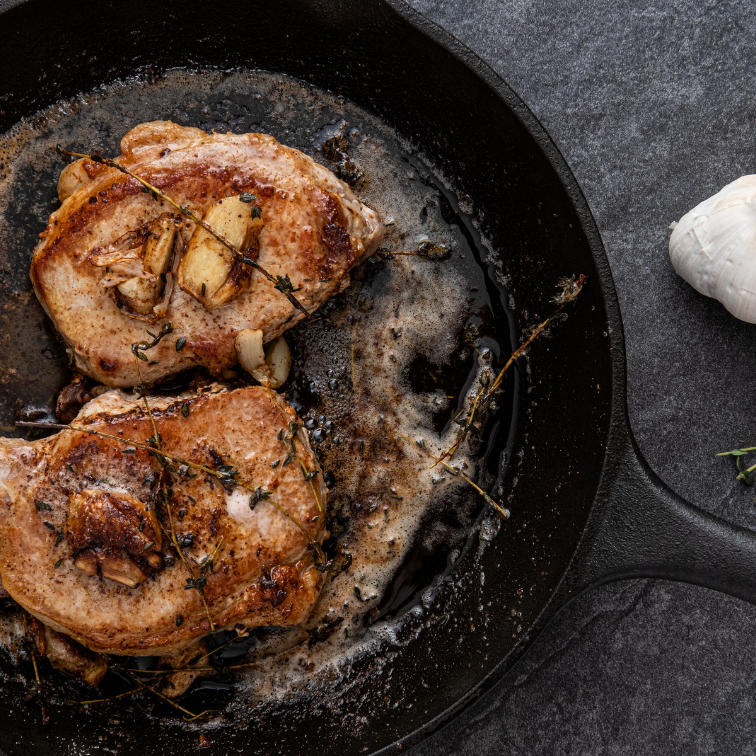
5 Responses
Great little article! Thankx……I’ve “gone bitter” in my older years too! All the vegetables in my brain now so choose from!
I’m getting more bitter by the day! That’s ok though. I’ll take rabe and negronis if I have to.
When cooking rabe I add anchovies to mine. Just sauté the anchovies along with the garlic and olive oil. Then add the red pepper and the broccoli rabe. Adds a different flavor but not overpowering
I like that! Some subtle umami. Thanks for the tip. -Chuck
Watercress ?